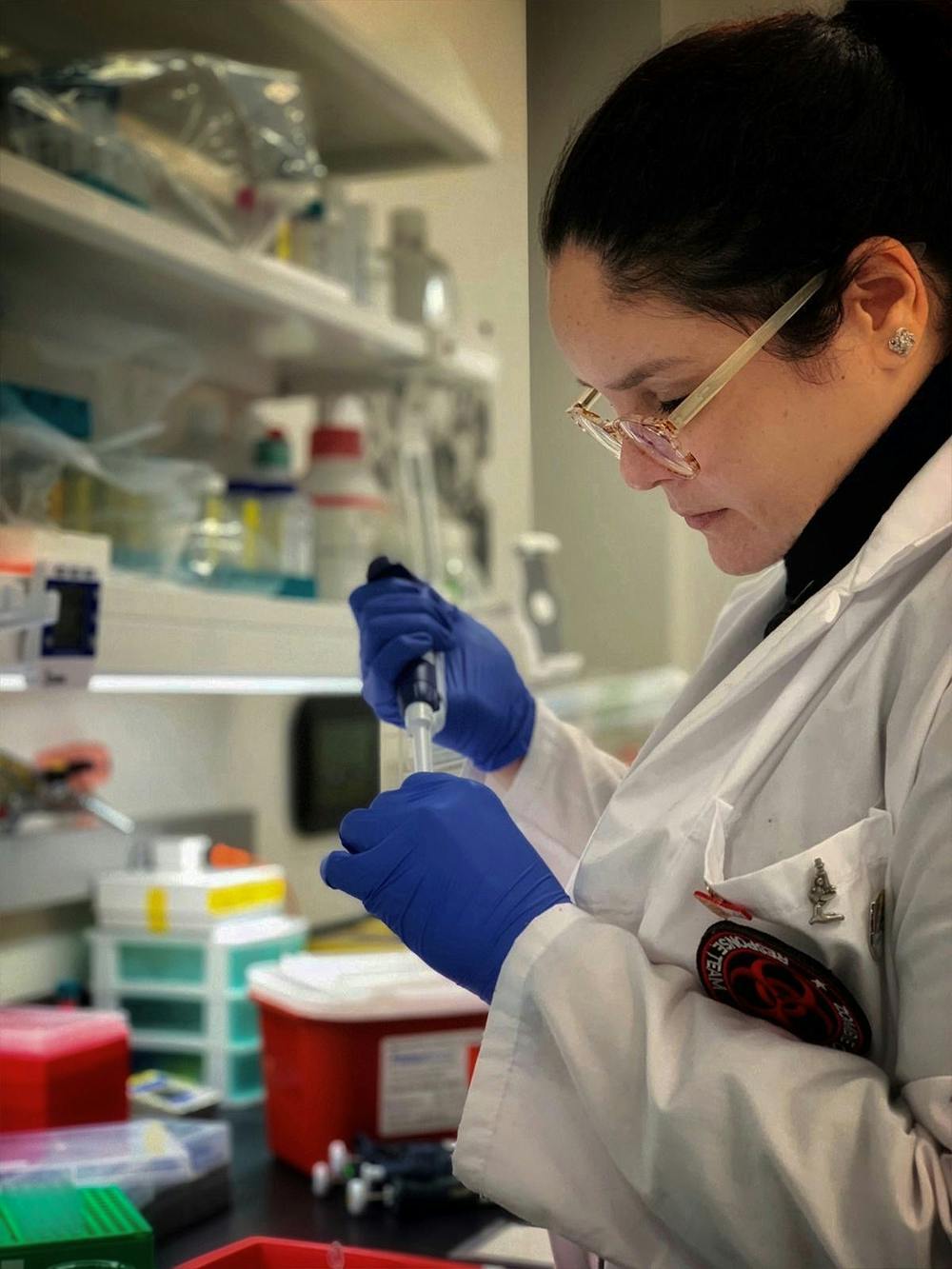
Istvan Tombacz from the Weissman laboratory prepares his samples for a gel electrophoresis.
Credit: Sukhmani KaurMore than 15 years ago in a small laboratory at the Perelman School of Medicine, professor of Medicine Drew Weissman, his research partner, and a small team discovered a new way for mRNA to be used effectively to create vaccines.
Now, in the midst of a pandemic that has killed over 1.2 million people worldwide, that groundbreaking discovery may contain the answer to creating a COVID-19 vaccine.
"My lifelong dream has always been to put something that I developed into people and to have it make a difference,” Weissman told The Daily Pennsylvanian in an interview on Thursday. “And now, [this work] will hopefully be curing the pandemic.”
The drug company Pfizer announced on Monday that its trial COVID-19 vaccine had been effective more than 95% of the time in early clinical trials, although this information has not been peer reviewed. The vaccine is being produced in partnership with the German biotechnology company BioNTech. BioNTech and Penn signed a licensing agreement in November 2018 in an effort to develop new vaccines for infectious diseases using Weissman’s mRNA technology.
Weissman said when he first heard about the 90% efficacy rate he viewed it as a “bit of a letdown.”
“All of our vaccines that we have been creating and testing on animals have been close to 100% effective,” Weissman said of his own efforts to create a COVID-19 vaccine. “So from a basic scientist perspective, it was a bit lower than what we have seen.”
He explained that despite his mild disappointment, it was still encouraging to get such a high success rate from the clinical trial as it was the first time the vaccine had been used in humans.

Members of the Weissman laboratory have been targeting the Zika virus as well as the COVID-19 virus using the mRNA technology they have developed.
Weissman and his team at Penn have been working on a variety of Phase 1 COVID-19 vaccines and testing them in animals, while BioNTech has skipped the animal testing stage and moved directly into clinical trials using his mRNA discovery. He said that his team’s current goal is to create a COVID-19 vaccine that does not lead to any local adverse effects, such as a sore arm or mild flu-like symptoms.
“It’s understandable that there are these local adverse effects because this is a great vaccine, but we’re still looking at ways of lowering that because we prefer a vaccine that gives no people a sore arm,” he said.
Creating a vaccine that is better than 90% effective with a single injection is another one of his team’s top priorities, Weissman said. Nearly 7 billion people will be looking to get the vaccine, many of whom live in remote areas where it might be difficult to receive more than one dose.

President and 1968 Wharton graduate Donald Trump has bristled at Pfizer’s announcement, claiming the news had been suppressed until after Election Day to purposely harm him. There is no evidence to support such a theory.
The Pfizer vaccine is also not associated with the president’s vaccine creation and dispersal program “Operation Warp Speed,” which has the goal of producing and delivering 300 million vaccines by January 2021, according to Pfizer’s senior vice president and head of vaccine research and development Kathrin Jansen.
Weissman said the United States government has not yet asked for his input on which members of the population should receive the vaccine first, but he believes that epidemiologists will be more involved in the distribution of the vaccine. Weissman also said that he expects Pfizer will have around 50 million doses of the vaccine ready for distribution by the end of 2020.
From there, Weissman said slowing the spread of the pandemic will come down to how many doses of the vaccine can be produced a year. He estimated that number to be around 500 million, meaning it would take many years before the entire world is vaccinated for COVID-19.

Photo from the Weissman Laboratory
Within the United States, he predicted it would take at least until mid-summer 2021 before the majority of the country has access to the vaccine.
He said he expects that Moderna — another biotech company that is using the same mRNA technology based on his work at Penn to create a similar vaccine of its own — will also have around 50 million doses produced by the beginning of 2021, and should have its vaccine approved within the first months of 2021.
Although Weissman has been involved in the production of, and in constant conversation with, BioNTech, he has not been involved with Moderna’s project.

The Weissman lab. (Photo from Mohamad-Gabriel Alameh)
While mRNA vaccine studies have only heated up within the past few years, Weissman said, he has been working on the possibility of creating vaccines using mRNA for much longer.
In 2005, Weissman and his Penn research partner at the time Katalin Karikó discovered that by modifying RNA using a naturally occurring modified nucleoside, they could reduce the inflammatory potential of the RNA and induce a much higher production of antigenic protein, a key feature of a successful vaccine.
Weissman said that when the COVID-19 pandemic broke out in early March, he and his team began preparing to use the mRNA technology for a vaccine. He said that as soon as the nucleotide sequence was discovered, they began working on possible mRNA-based COVID-19 vaccines throughout the summer.
“We have been very excited over the past months,” Weissman said. “And now it feels like our work will hopefully cure the pandemic.”
The Daily Pennsylvanian is an independent, student-run newspaper. Please consider making a donation to support the coverage that shapes the University. Your generosity ensures a future of strong journalism at Penn.
Donate



